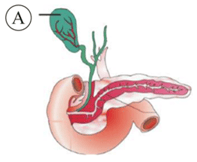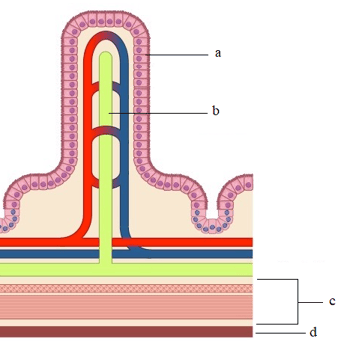Embibe Experts Solutions for Chapter: Digestion and Absorption, Exercise 3: Level 3
Embibe Experts Biology Solutions for Exercise - Embibe Experts Solutions for Chapter: Digestion and Absorption, Exercise 3: Level 3
Attempt the practice questions on Chapter 16: Digestion and Absorption, Exercise 3: Level 3 with hints and solutions to strengthen your understanding. Biology Crash Course NEET solutions are prepared by Experienced Embibe Experts.
Questions from Embibe Experts Solutions for Chapter: Digestion and Absorption, Exercise 3: Level 3 with Hints & Solutions
Inhibition of gastric and stimulation of gastric, pancreatic and bile secretions are controlled by hormones
Pick up the correct matching pair:-
| (A) | Maltase | (i) | Pancreatic juice |
| (B) | Trypsinogen | (ii) | Bile juice |
| (C) | (iii) | Saliva | |
| (D) | Ptyalin | (iv) | Intestinal juice |
| (v) | Gastric juice |
Identify the structure labelled  in Human digestive system and correlate it with its exact function.
in Human digestive system and correlate it with its exact function.

| Structure | Function | |
| (1) | Liver lobule | Bile formation |
| (2) | Gall bladder | Synthesis of bile |
| (3) | Liver lobule | Storage of bile |
| (4) | Gall bladder | Storage of bile |
There are _____ molars in each jaw.
The diagram given below represents T.S. of Intestine. Identify the layers labelled as a, b, c, and d.

Consider the following four statements and select the correct option stating true (T) or false (F):
(i) Thinning of limbs, dry, wrinkled skin, emaciated body is signs of marasmus.
(ii) The muscular activities of the different parts of the alimentary canal are moderated by neural mechanisms, both local and through CNS.
(iii) Most absorbed fats first enter the lymphatic system, whereas carbohydrates enter the blood.
(iv) If the stomach's parietal cells become non-functional, the pH of the stomach will fall abruptly.
The nutritional quantity in breakfast and lunch of a child is mentioned in the following table.
| BREAKFAST (Amount/serving) | LUNCH (Amount/serving) |
|
Saturated fat Oil Cholesterol |
Starch Dietary fibre Sugar Protein |
State the approximate amount of total kilocalories supplied by this food. How much of it will come from the carbohydrates?
Anxiety and eating spicy food together in an otherwise normal human, may lead to
